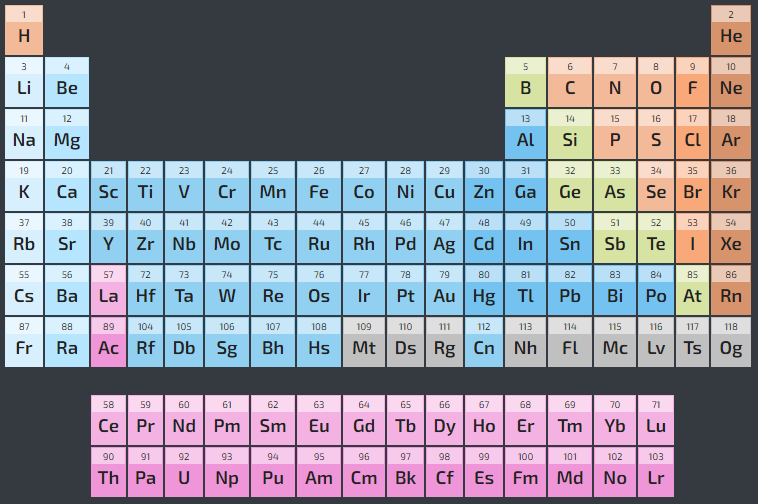

The alkali metals are found in the leftmost column of the periodic table, known as Group 1. In this notation, the atomic number is not included. Evaluate Information Sodium is an example of an alkali metal.

Symbol-mass format for the above atom would be written as Cr-52. For an example of this notation, look to the chromium atom shown below:Īnother way to refer to a specific atom is to write the mass number of the atom after the name, separated by a hyphen. Sodium is a chemical element of the periodic table with chemical symbol Na and atomic number 11 with an atomic weight of 22.9898 u and is classed as alkali metal and is part of group 1 (alkali metal). The "A" value is written as a superscript while the "Z" value is written as a subscript. Interactive periodic table with element scarcity (SRI), discovery dates, melting and boiling points, group, block and period information. Both the atomic number and mass are written to the left of the chemical symbol. Periodic Table Royal Society of Chemistry.
Na periodic table how to#
I also discussed how to draw and write an orbital diagram of sodium. In this article, I have discussed in detail how to easily write the complete electron configuration of sodium. Summary The vertical columns on the periodic table are called groups or families because of their similar chemical behavior. The elements astatine ( At) and radon ( Rn) are both in period 6. For example, the elements sodium ( Na) and magnesium ( Mg) are both in period 3. Sodium is a classified alkali metal element. A period is a horizontal row of elements on the periodic table. The composition of any atom can be illustrated with a shorthand notation called A/Z format. Sodium is the 11th element in the periodic table and its symbol is ‘Na’. (More detailed calculations give a value of Z eff = +1.26 for Li.) In contrast, the two 2 s electrons in beryllium do not shield each other very well, although the filled 1 s 2 shell effectively neutralizes two of the four positive charges in the nucleus.\] Let students know that these electrons in the outermost. The noble gases are colourless, odourless, tasteless, nonflammable gases. For instance, hydrogen, lithium, sodium, and potassium all have 1 electron on their outer energy level. The elements are helium (He), neon (Ne), argon (Ar), krypton (Kr), xenon (Xe), radon (Rn), and oganesson (Og). Thus the single 2 s electron in lithium experiences an effective nuclear charge of approximately +1 because the electrons in the filled 1 s 2 shell effectively neutralize two of the three positive charges in the nucleus. interactive periodic table noble gas, any of the seven chemical elements that make up Group 18 (VIIIa) of the periodic table. Although electrons are being added to the 2 s and 2 p orbitals, electrons in the same principal shell are not very effective at shielding one another from the nuclear charge. Why is this so In 1864, Julius Lothar Meyer, a.
Na periodic table download#
Download 89 Royalty Free Sodium Periodic. Likewise, lithium, sodium, and potassium react with other elements (such as oxygen) to make similar compounds. All have a filled 1 s 2 inner shell, but as we go from left to right across the row, the nuclear charge increases from +3 to +10. The best selection of Royalty Free Sodium Periodic Table of Elements Vector Art, Graphics and Stock Illustrations. The atoms in the second row of the periodic table (Li through Ne) illustrate the effect of electron shielding. Sodium has 11 protons in its nucleus and is.

The greater the effective nuclear charge, the more strongly the outermost electrons are attracted to the nucleus and the smaller the atomic radius.Ītomic radii decrease from left to right across a row and increase from top to bottom down a column. The symbol Na comes from the Latin name natrium, which means sodium. For all elements except H, the effective nuclear charge is always less than the actual nuclear charge because of shielding effects. \( \newcommand\)) experienced by electrons in the outermost orbitals of the elements.


 0 kommentar(er)
0 kommentar(er)
